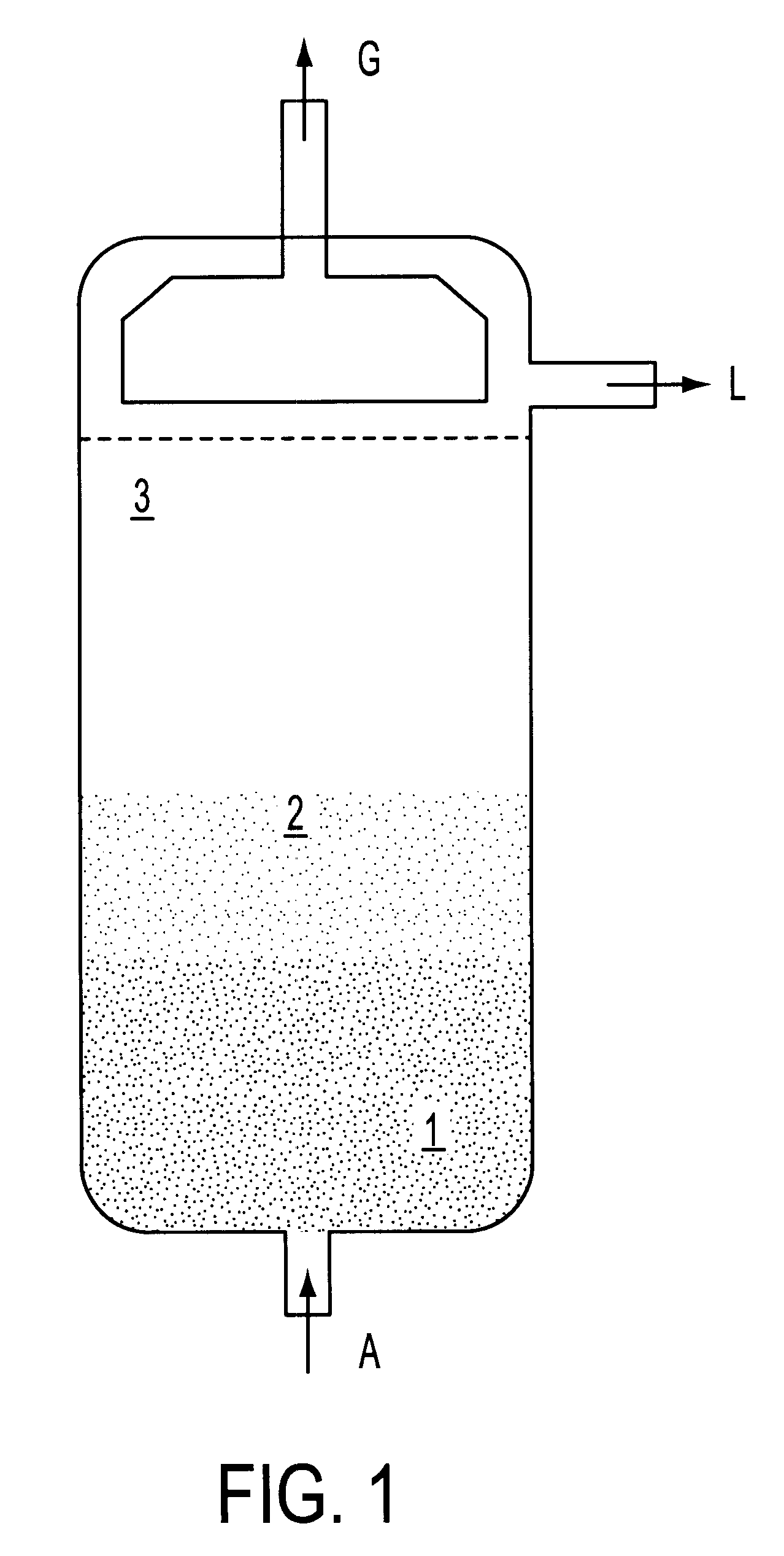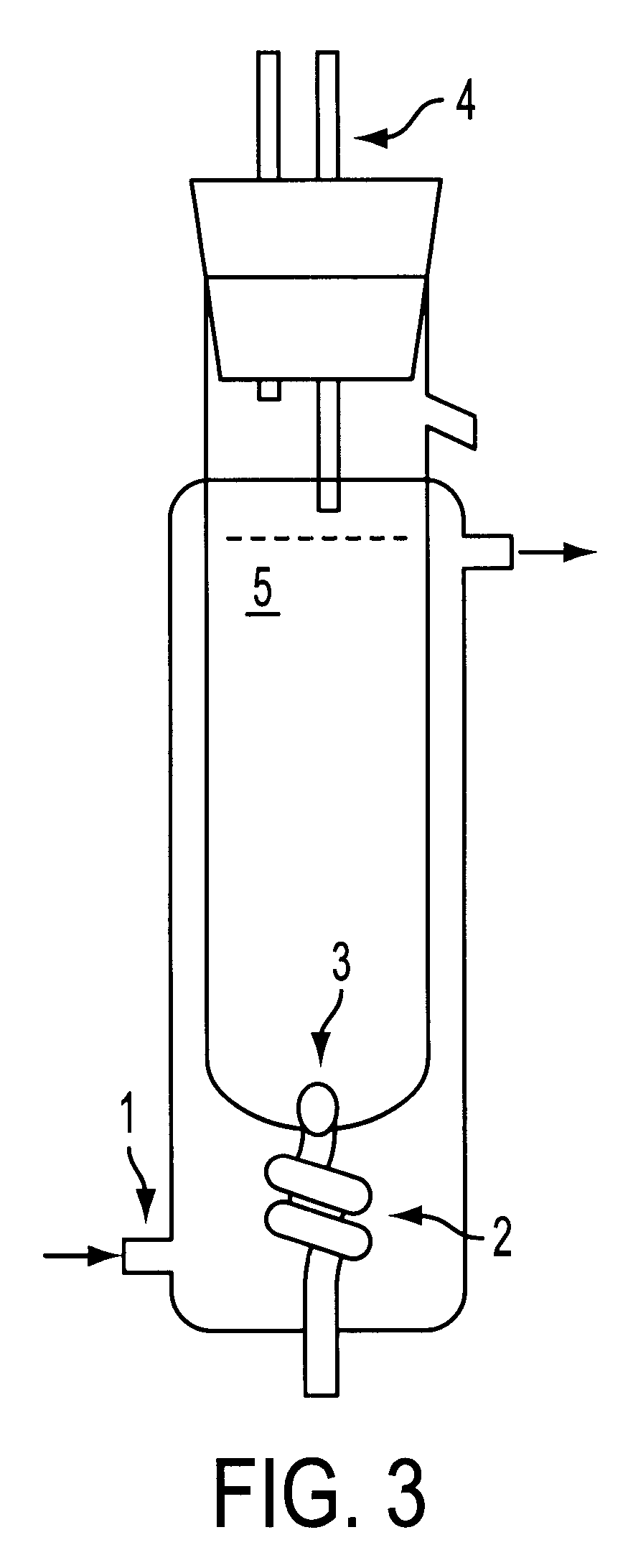Method for processing lignocellulosic material
a technology of lignocellulosic material and processing method, which is applied in biological water/sewage treatment, multi-stage water/sewage treatment, sludge treatment by oxidation, etc., can solve the problems of rate limitation, cost of process water used, and the price of bioethanol that is not competitive with that of traditional fossil fuels
- Summary
- Abstract
- Description
- Claims
- Application Information
AI Technical Summary
Benefits of technology
Problems solved by technology
Method used
Image
Examples
example 1
Evaluation of the Results Obtained from Each Single Step in the Method for Processing Lignocellulosic Material
1.1. Materials and Methods
1.1.1 Reagents
Unless otherwise indicated, reagents employed as described in the following are available from established suppliers of laboratory reagents.
1.1.2 Lignocellulosic Starting Material
The lignocellulosic material employed in the experiments described below was wheat straw harvested at Forskningscenter Rise (Rise National Laboratory) in 1997.
1.1.3 Reaction Vessel for Wet-Oxidative Pre-Treatment of Lignocellulosic Material
The wet-oxidation reaction vessel employed was a recirculatory, laboratory scale reactor (in the following denoted the "loop reactor") capable of being pressurised with gas (FIG. 2). The loop reactor in question, which has previously been described by Bjerre et at., 1996
The loop reactor was heated by immersing it in a thermostatic bath of molten salt e.g. consisting of a 1:1 (w / w) mixture of anhydrous sodium nitrate and anhy...
example 2
Evaluation of Degradation Products from Wet Oxidation of Lignocellulosic Material
2.1 Introduction
This example shows a study of the identification and quantification of the sugar yield and degradation products from wet oxidation of lignocellulosic material and to evaluate the fractionation of the cellulose and hemicellulose.
2.2 Summary of Experiments
Wet oxidation of wheat straw was performed with eight combinations of the four parameters; temperature, time, carbonate and oxygen. Two of the experiments were superior in obtaining solubilization of hemicellulose and lignin from the solid fraction, with high recoveries of the hemicellulose (52.0-56.5%) and the cellulose (99.7-99.8%). The solid fractions consisted of 67.5-65.8% cellulose, 7.6-10.4% hemicellulose and 4.8-5.6% lignin. The enzymatic convertibility of cellulose to glucose was 62.1-67.7%. The liquid fractions consisted of solubilized hemicellulose and low molecular weight degradation products such as carboxylic acids, monomeri...
example 3
Evaluation of the Potential Inhibitors at Various Steps of the Process for Converting Lignocellulosic Biomass Material
3.1 Material and Methods
3.1.1 Pre-Treatment--Wet Oxidation
Wet oxidation (WO) was carried out in a 2-L loopreactor constructed at Ris.O slashed. National Laboratory (Bjerre et al., 1996). Pre-treatment conditions for fermentation substrate was 10 minutes wet oxidation at 195.degree. C., 6.5 g / L Na.sub.2 CO.sub.3 and 12 bar O.sub.2. Ground wheat straw (5 mm) (60 g) was nixed with 1-L water and Na.sub.2 CO.sub.3 before adding oxygen pressure and heating the suspension. After cooling to below 30.degree. C., the whole slurry of pre-treated wheat straw was removed from the reactor by suction. The composition of wheat straw was determined as previously described (Ahring et al., 1996). Pretreated wheat straw consisted of 34.6 g / l cellulose, of which 20.8 g / l could be converted to glucose (67 .degree. / a enzymatic convertibility) by a CelluClast.RTM. and Novozymo 188 cellulase...
PUM
| Property | Measurement | Unit |
|---|---|---|
| partial pressure | aaaaa | aaaaa |
| temperature | aaaaa | aaaaa |
| temperature | aaaaa | aaaaa |
Abstract
Description
Claims
Application Information
 Login to View More
Login to View More - R&D
- Intellectual Property
- Life Sciences
- Materials
- Tech Scout
- Unparalleled Data Quality
- Higher Quality Content
- 60% Fewer Hallucinations
Browse by: Latest US Patents, China's latest patents, Technical Efficacy Thesaurus, Application Domain, Technology Topic, Popular Technical Reports.
© 2025 PatSnap. All rights reserved.Legal|Privacy policy|Modern Slavery Act Transparency Statement|Sitemap|About US| Contact US: help@patsnap.com



